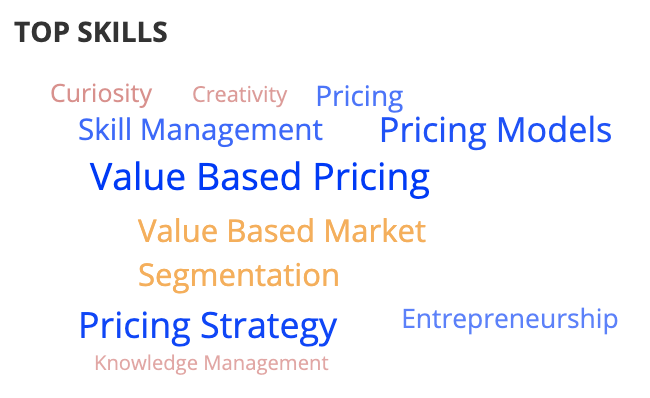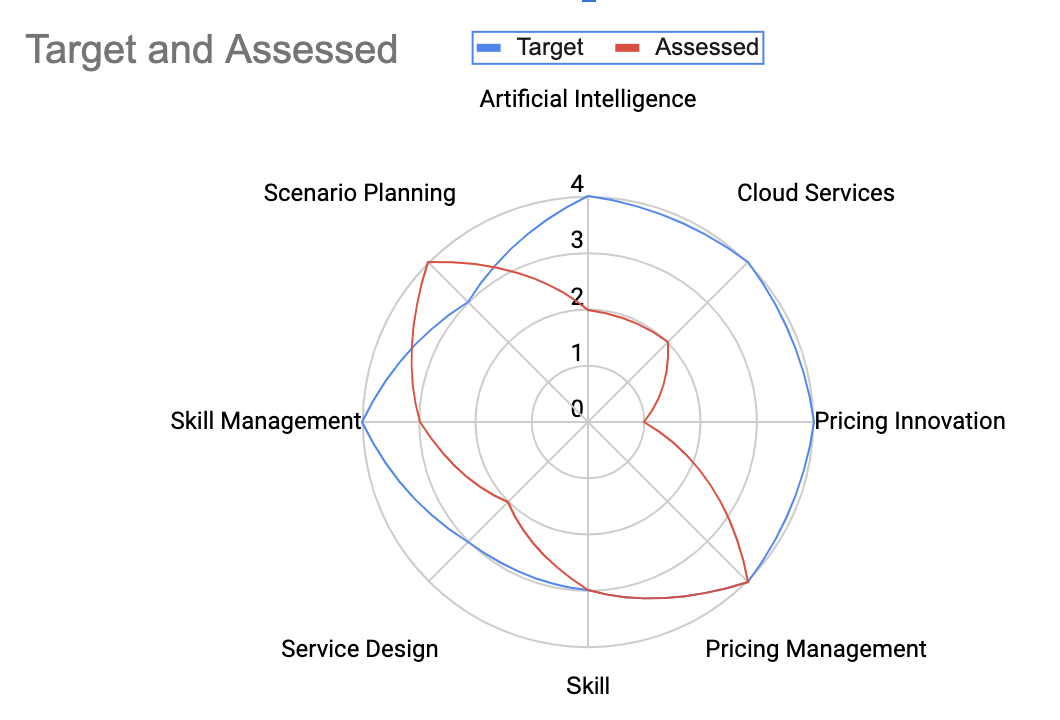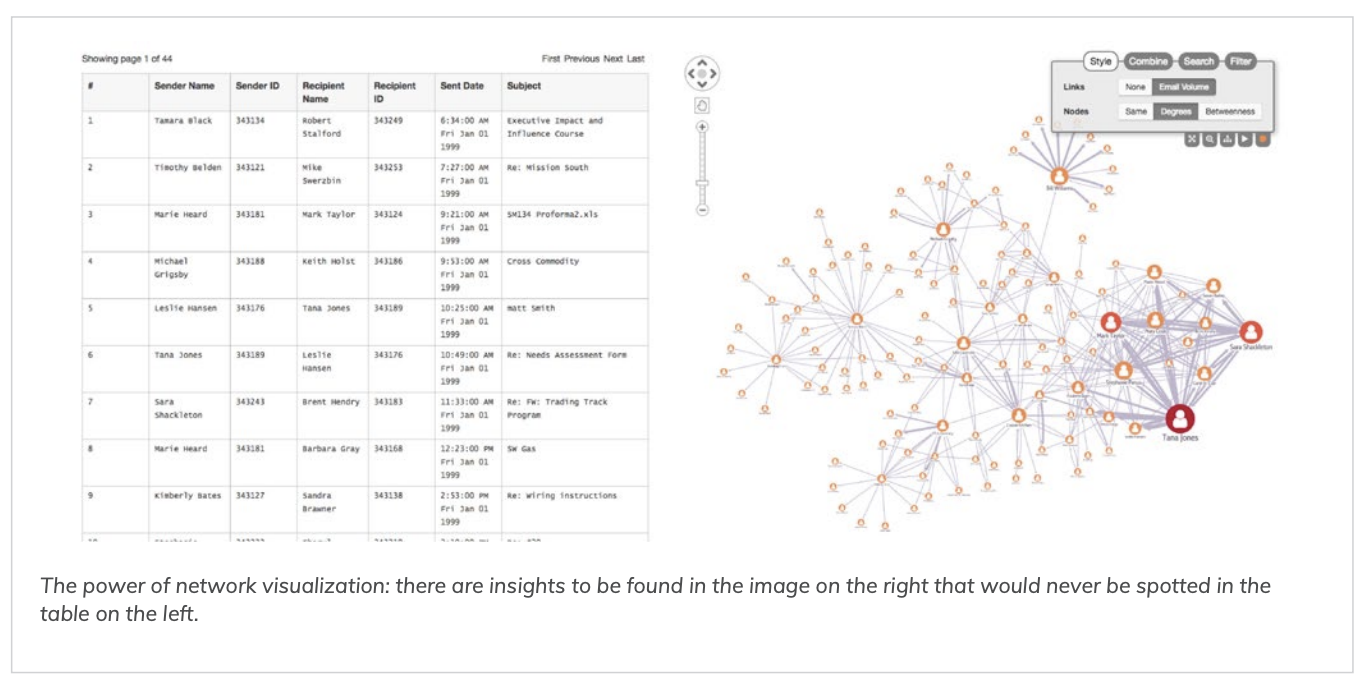What is a skill profile?
Steven Forth is co-founder and managing partner at Ibbaka. See his skill profile here.
What is a skill profile?
The simplest answer is that a skill profile is a representation of the skills associated with a person, a team, an organization or some larger aggregation like a community, which may be geographic (the skills of people in Vancouver) or interest based (the skills of people engaged in design thinking).
Skill profiles have three inputs
The underlying skill data together with estimates of the level of expertise
A way to organize this data (this is often done with a skill or competency model)
A visual and interactive presentation of organized skill data
Here is an example of an individual skill profile. It includes more than 600 separate skills with estimates of the level of expertise for each skill and a category system to help organize all this data.
An example of a skill profile that integrates estimates of expertise, a category system, a tag cloud of top skills and a skill list
How are skill profiles used?
Skill profiles have many uses. It is part of their power that they support multiple use cases and link use cases together. Let’s work through some of the most common use
Skill profiles help us to see our own skills and the skills of the people around us
The most obvious is to see what skills a person, team, organization has. Skill profiles are the end result of a skill search. (There can be steps along the way, like a simple profile that can be displayed in the context of search results.)
A simple skill profile used in the context of skill search.
Skill profiles support skill planning and skill comparison
Skill profiles also also play an important role in reflection and skill planning. Most of us are not really aware of our own skills and how we use them. We are even less aware of the skills of the people we work with. A good skill profile helps you think about your own skills and the skills of the people around you. Studying the profiles of different people with the same role can help build an appreciation for all the different ways one can approach a role. We each bring a unique set of skills to our work and this skill diversity is an important well for resilience and adaptation (see What is skill diversity? How does it impact performance?). Skill profiles should help us to see that diversity.
Skill profiles link people to people
Our skills are one of the things that connect us to other people. From the skill profile it should be possible to quickly see other people that you share skills with. At Ibbaka we are just beginning to explore the role that skills play in connecting us to each other and in building communities of skill.
Skill profiles link people to roles and projects
A list of skills really does not tell one much about how skills are applied and used to perform work. To do this the skill profile needs to connect skills to projects and skill to roles. There are several ways to do this. When one goes to a skill one can see all of the Jobs, Roles and Projects or Teams where the skills has been used.
One can also start with a Job, Role or Project/Team and see what skills a person used in that context.
Both paths are important, and are one reason why a good skill profile needs to include more than just skills.
Skill profiles should tell a story
All of this makes skill profiles sound like dry and formal documents. They don’t need to be. A good skill profile should tell a story about the person. At Ibbaka we do this by letting people (and teams and organizations) add highlights to their profiles. The highlights are a way to tell the story of one’s career.
Some visual representations of skill profiles
There are many different approaches to designing a skill profile. This is still early days and no one has fully cracked the code. Research into the different approaches to skill profile design is an ongoing theme at Ibbaka. Here are some of the approaches we have seen. These are not mutually exclusive. Most skill profiles designs will use these in some combination.
The Skill List
This is the simplest approach. You have a person’s name, maybe their role, and a list of skills. Sometimes each skill has an estimate of expertise. The list may have some structure, or it may be just an alphabetical listing. These lists do not provide a lot of affordances, but they are where many designs start.
The Skill Cloud
Clouds became a popular interface pattern about ten years ago, when social tagging systems like del.icio.us were at their prime. (I still miss the old del.icio.us, they got a lot right, but a poor choice of investors killed the company.)
Clouds can organize information on four dimensions:
X-axis
Y-axis
Size of the text
Text attributes like color or style
Ibbaka currently only uses size, color and saturation it its skill clouds, we are not trying to use position (we may in the future).
Size for how often the skill is used
Color for the skill category
Saturation for confidence in the SkillRank skill assessment
To keep the cloud manageable, only the top few skills are displayed. The skill cloud is interactive and clicking on any skill takes you to that skill on the skill list.
The Skill Grid
Sometimes is makes sense to display skills on a grid. The skill grid is a skill list with additional information added. Ibbaka uses a skill grid to enhance the information presented for each skill, letting you see who else has the skill, what projects it has been used on and so on.
Spider Graphs for Skills
One of the most common use cases for skills is the spider graph, sometimes referred to as a radar graph. This is often used to compare the target level for a skill with the assessed level, or the current target level with the future target level.
Connection Circles for Skills
Skills make most sense when they are connected to other skills. Performance is generally not determined by any one skill but by combinations of skills. What is the best way to portray these combinations?
One possibility that Ibbaka is exploring is connection circles. This representation is popular in genetics research for showing how regulatory networks work. See the example below. Now imagine that instead of genes that skills were organized around the circle and the skills a person used together in different roles or on different projects were shown. One could even use this to show the skill connections on a team, with each team member’s skills on an arc of the circle.
Skill connections are at the center of modern innovations in skill management and we need better ways to visualize and manage these connections.
You can learn more about connection circles on the wonderful The Systems Thinker blog.
The Skill Graph
Another way to show the connections between skills and skills, skills and people, roles, teams and other things, is to visualize the skill graph. The skill graph is the underlying data format for skill and competency management. Skills, people, roles, teams, learning resources and other things are the nodes in this graph and the connections between them are the edges (in other words, there can be several different types of edges). The native format for this graph is RDF, the basic language for the semantic web.
The connections in an RDF graph, or a skill graph expressed in RDF, can be visualized and these visualizations can make obvious patterns and connections that would otherwise be easy to miss.
Contact us if you have ideas for skill profile design!
Ibbaka is looking to work with people with ideas for the design of skill profiles and the visualization of the skill graph. If you have ideas or are interested in exploring this conversation please contact us at info@ibbaka.com.












